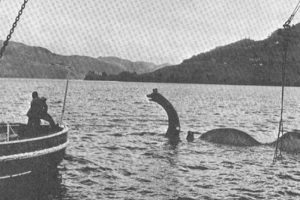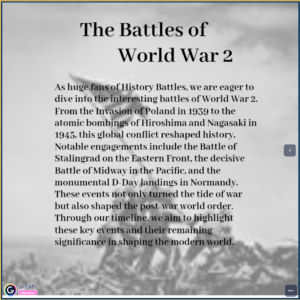Poliomyelitis is a “highly contagious viral infection that can lead to paralysis, respiratory problems, and even death caused by the poliovirus.”1 The virus is highly contagious and specific to humans. The first outbreak of polio in the United States occurred in 1894 with more than 132 reported cases. The number of infected people throughout the United States increased rapidly after the first epidemic with thousands being affected every year after the first onset.2 Thousands of people in the United States were affected by the virus before Dr. Jonas Salk found the vaccine for Poliomyelitis.
Dr. Jonas Salk was born on October 28, 1914, just as World War I was beginning, and four years before the great influenza pandemic of 1918-1919. In 1916 influenza and polio began killing children and the elderly in large numbers.3 Salk’s brilliance could be seen at a young age. When he began school at the age of five, he was very eager to learn, and was able to skip ahead a few grades. Salk described his early years as “the life of an only child, having full attention of a doting, controlling mother who wanted to be sure that her child is protected and will grow up to be a worthwhile person.”4 Salk’s mother could not have done a better job. Dr. Jonas Salk began conducting research on viruses in the 1930s as a student at New York University. After graduating from New York University, Salk attended the University of Michigan. At the University of Michigan, Dr. Salk began working on a flu vaccine, for which he is now known as one of the key contributors to the development of the flu vaccine during World War II. By the 1950s, he was awarded a grant to “study the polio virus and develop a possible vaccine.”5 Dr. Salk had devised a version of the polio vaccine immediately after obtaining the grant. He began clinical trials in which he “was to kill several strains of the virus and then inject the benign viruses into a healthy person’s bloodstream.” 6 This was attempted at first by various other scientists before it was perfected by Dr. Salk. This was successful because the person’s immune system in which it was injected would soon begin to form antibodies towards the virus, which would help in resistance with future exposure to polio.
Before the vaccine was developed and made widely available to the public, many researchers developed alternative ways to help control the symptoms of polio. Sister Kenny, an Australian nurse, came to the United States to promote a treatment she had developed specifically for polio. This treatment consisted of the use of warm compresses to relax contracting muscles. Another invention was that of the “iron lung,” which was developed to aid in respiration. Some of the main symptoms of polio are swallowing and respiratory difficulties, so the “iron lung” was developed to help alleviate some of the respiratory problems people with polio were experiencing.7

On March 26, 1953, Dr. Salk was able to announce his findings on the polio vaccine. The news was quickly published in articles and newspapers and announced on the radio. In 1954, clinical trials began testing on approximately two million American schoolchildren. It was not until April of 1955 that it was announced that the vaccine was indeed effective and could be manufactured. It took about two years for the vaccine to become widely available throughout the United States. Within the first year that the polio vaccine became available the number of cases per year decreased dramatically. Polio, along with many other viral diseases, has no cure. The vaccine that was manufactured was intended to prevent others from contracting the virus. With polio, prevention is the key. Albert Sabin, a Polish-American researcher, was able to facilitate the distribution of the vaccine by developing an oral vaccine.8
For the current year 2016, only about seventy cases of poliomyelitis have been reported, and only two countries remain polio-endemic.9 About 90-95% of the reported cases are asymptomatic, meaning no symptoms are present. This has been made possible because of Dr. Salk and all of the researchers that put their time and effort into discovering the vaccine to prevent poliomyelitis.
- Bernard Seytre and Mary M. Shaffer, “Coming Along at the Right Time: Jonas Salk,” in The Death of a Disease : A History of the Eradication of Poliomyelitis (New Brunswick: Rutgers University Press, 2005), 44. ↵
- Scott S. Smith, “Jonas Salk Stood Tall With His Polio Vaccine Rescue: The Chemist Came through in Paralysis Battle,” Investor’s Business Daily, July 17, 2015. ↵
- Scott S Smith, “Jonas Salk Stood Tall With His Polio Vaccine Rescue: The Chemist Came through in Paralysis Battle,” Investor’s Business Daily, July 17, 2015. ↵
- Charlotte DeCroes Jacobs, Jonas Salk: A Life, 1st edition (Oxford ; New York: Oxford University Press, 2015), 36. ↵
- Scott S. Smith, “Jonas Salk Stood Tall With His Polio Vaccine Rescue: The Chemist Came through in Paralysis Battle,” Investor’s Business Daily, July 17, 2015. ↵
- Salem Press Biographical Encyclopedia, 2015, s.v. “Jonas Salk,” by Elof Axel Carlson. ↵
- Charlotte DeCroes Jacobs, Jonas Salk: A Life, 1st edition (Oxford ; New York: Oxford University Press, 2015), 45. ↵
- Salem Press Biographical Encyclopedia, 2015, s.v. “Jonas Salk,” by Elof Axel Carlson. ↵
- Seytre and Shaffer, “Coming Along at the Right Time: Jonas Salk,” in The Death of a Disease : A History of the Eradication of Poliomyelitis, 44. ↵



65 comments
Yahaira Martinez
Ive always read about the polio epidemics and how life saving the vaccine was but it was nice to read about the man who helped make the end to such a terrible disease possible. Though the polio disease is still present in the world and has yet to be completely eliminated, the vaccine was clearly a very major step in vaccinations against epidemics. if it wasn’t for this doctor, a lot more people would have suffered from this.
Destiny Flores
I’ve heard of the polio vaccine but didn’t know into depth of the background of it that is laid out in this article. It’s crazy how illnesses and epidemics can come out of no where and take so many lives-something so microscopic yet were so vulnerable to it. Thanks to medical advances, our knowledge and understanding of viruses is evolving just as fast as they are.
Cristian Medina-Lopez
It is quite interesting how this virus came out of nowhere and affected a lot of people in the United States and we had no idea how to cure it. Dr. Salk could be seen as a hero for the work he did to not only help out people of that time but for the sake of our lives today. This article was incredibly captivating and written with such great detail that I feel like I have done research on the topic myself in the past.
Lauryn Hyde
Great article that covers such a crucial person, Dr. Salk. Without people like him we would not be able to survive many diseases such as polio. With an increasing population and densely populated cities it becomes ever more so important to have people like Dr. Salk to help create vaccines to help viruses not be as deadly as they once were.
Troy Leonard
i have heard if the disease polio but i was very unaware of the history behind it. before reading this article i have never heard of doctor Salk before. it is amazing how he developed the vaccine to prevent the virus from spreading. if it wasn’t for him who knows how long it would have taken to find a vaccine or if a vaccine would have even be brought up yet.
Christine Sackey
I had heard about polio but I did not know the history that went along with it. I liked how the author included other methods that were used to help alleviate that pain of the disease. Not many people hear about that part of the disease. I enjoyed hearing about how the doctor was raised and his upbringing. It helped to create a whole picture for me.
Joel Gracia
This is a heartwarming story, and makes me thankful that a virus as terrible as this is not nearly as much of a worry for us in this day and age. While the actual story was great, what intrigued me even more and inspired much thought was the fact that there is a long story of dedication, trial and error, and success like this behind each drug and vaccination that we use so often now. It is important to recall those individuals just like Dr. Salk who contributed greatly to our quality of life now.
Osman Rodriguez
This article piqued my interest for two reasons. One, because I am particularly interested in the medical field and two, because I know someone who has polio. I never knew about Dr. Jonas Salk and his work on finding a cure for poliomyelitis. Personally, and I know many others would probably agree, I think his work is very important and he contributed greatly to furthering our health.
Amanda Figueroa
This article showed how Dr. Salk developed the vaccine in an organized and entertaining way. I was intrigued with all the facts and also, because I did not know who had created the vaccine. Dr. Salk should be more well-known as he has prevented many, many deaths that have occurred because of the polio virus. I also didn’t know that poliomyelitis lead to paralysis. This was an interesting fact that had me reading more.
Valeria Hernandez
Aylin Salinas article provides historical information about the trajectory record of Polio. Salinas creates an objective article. Explaining Dr. Jonas Salk contribution to finding a vaccine for the viral machine. By providing statistics to the readers Salinas is able to prove her credibility. The article picked my interest because of the dramatic introduction. A good strategy set by the author driving the reader to read the entire article.